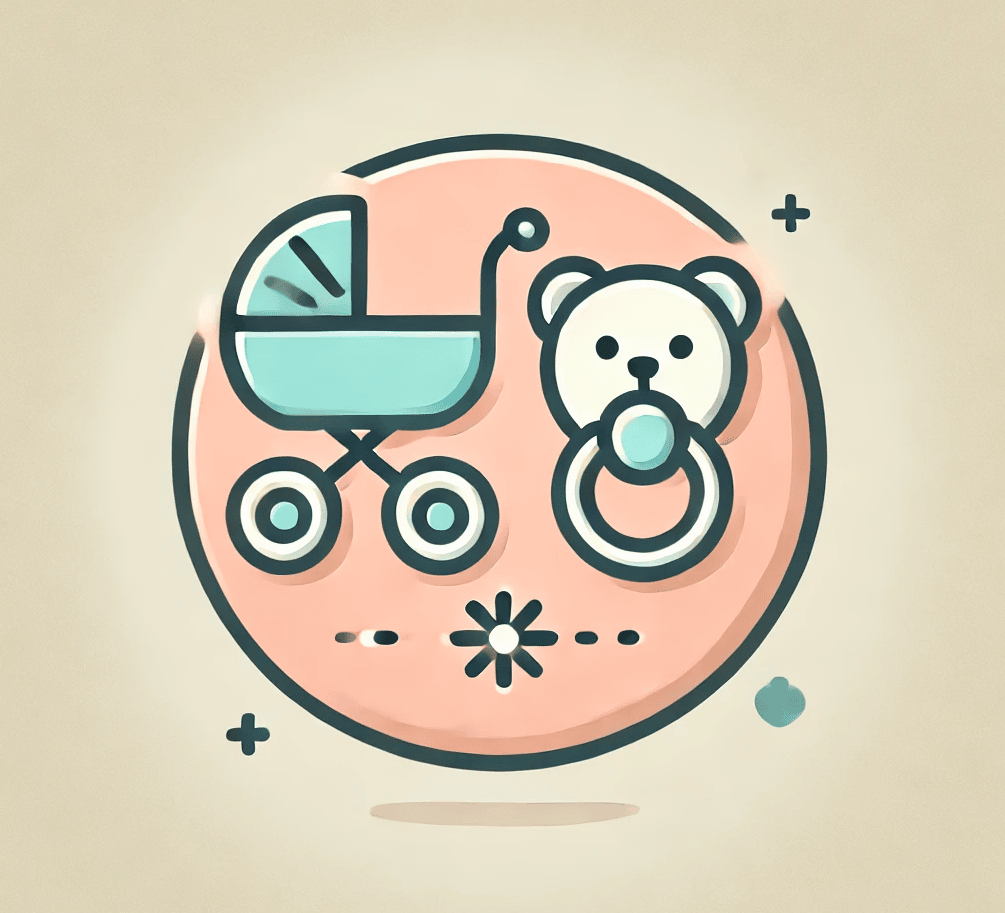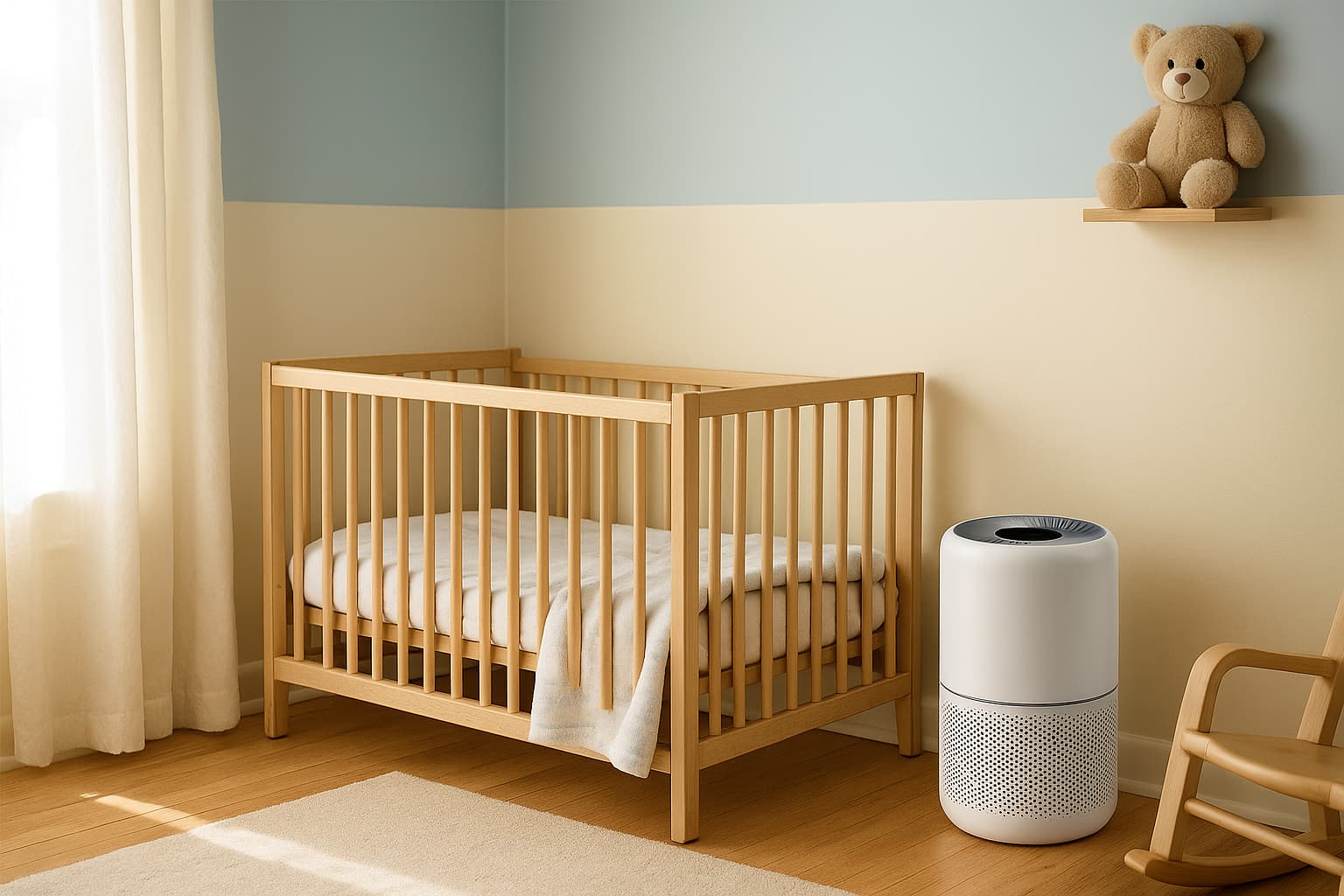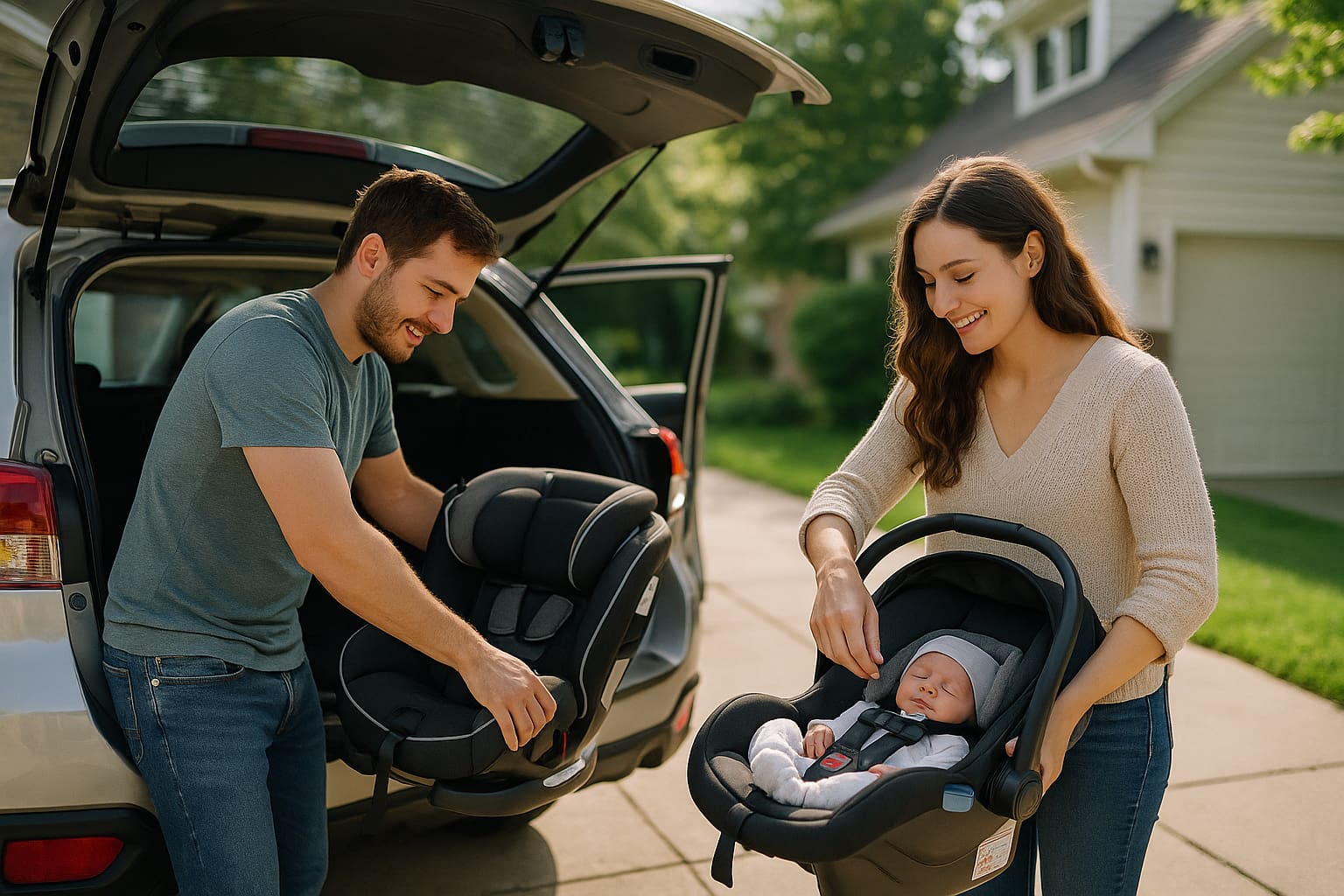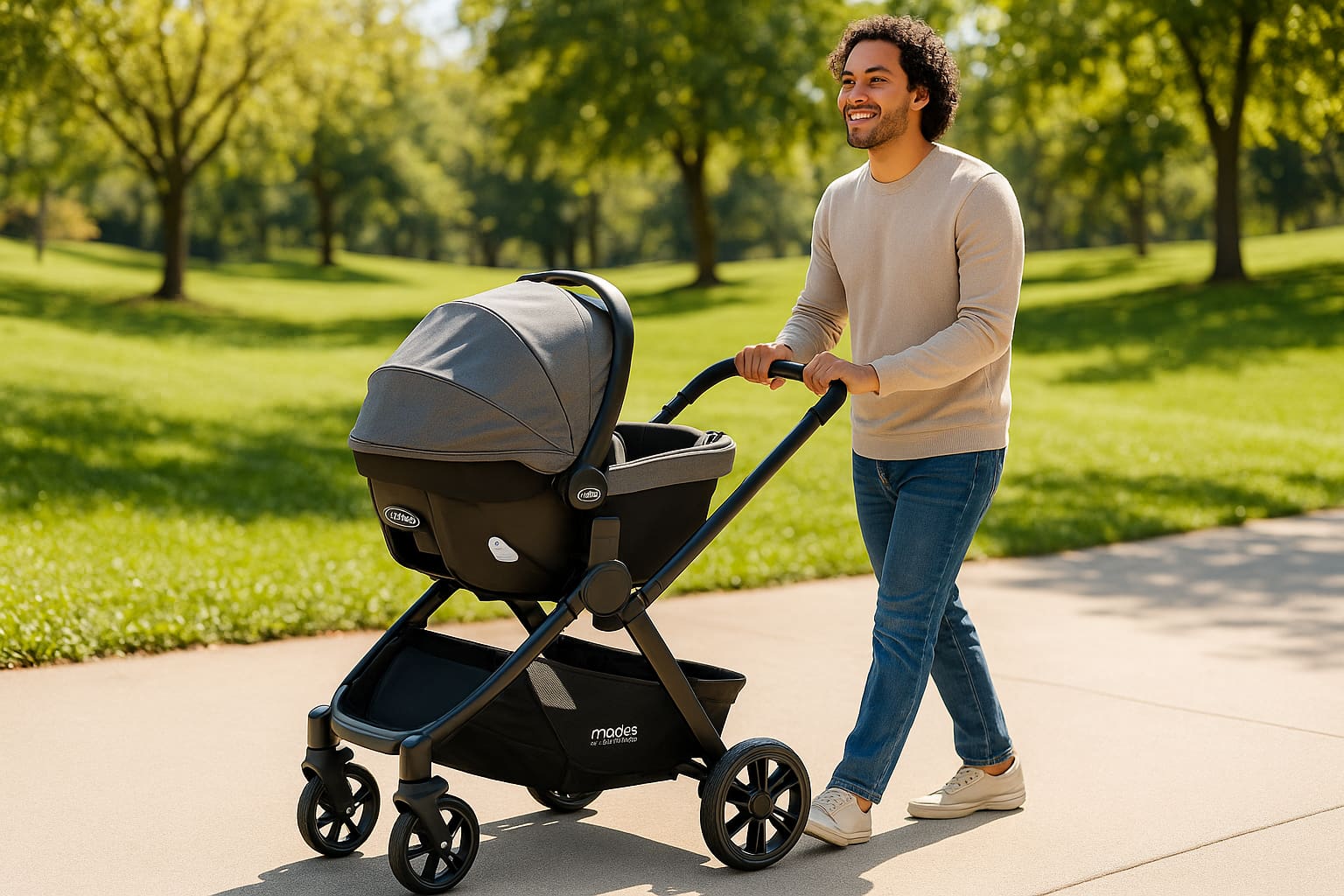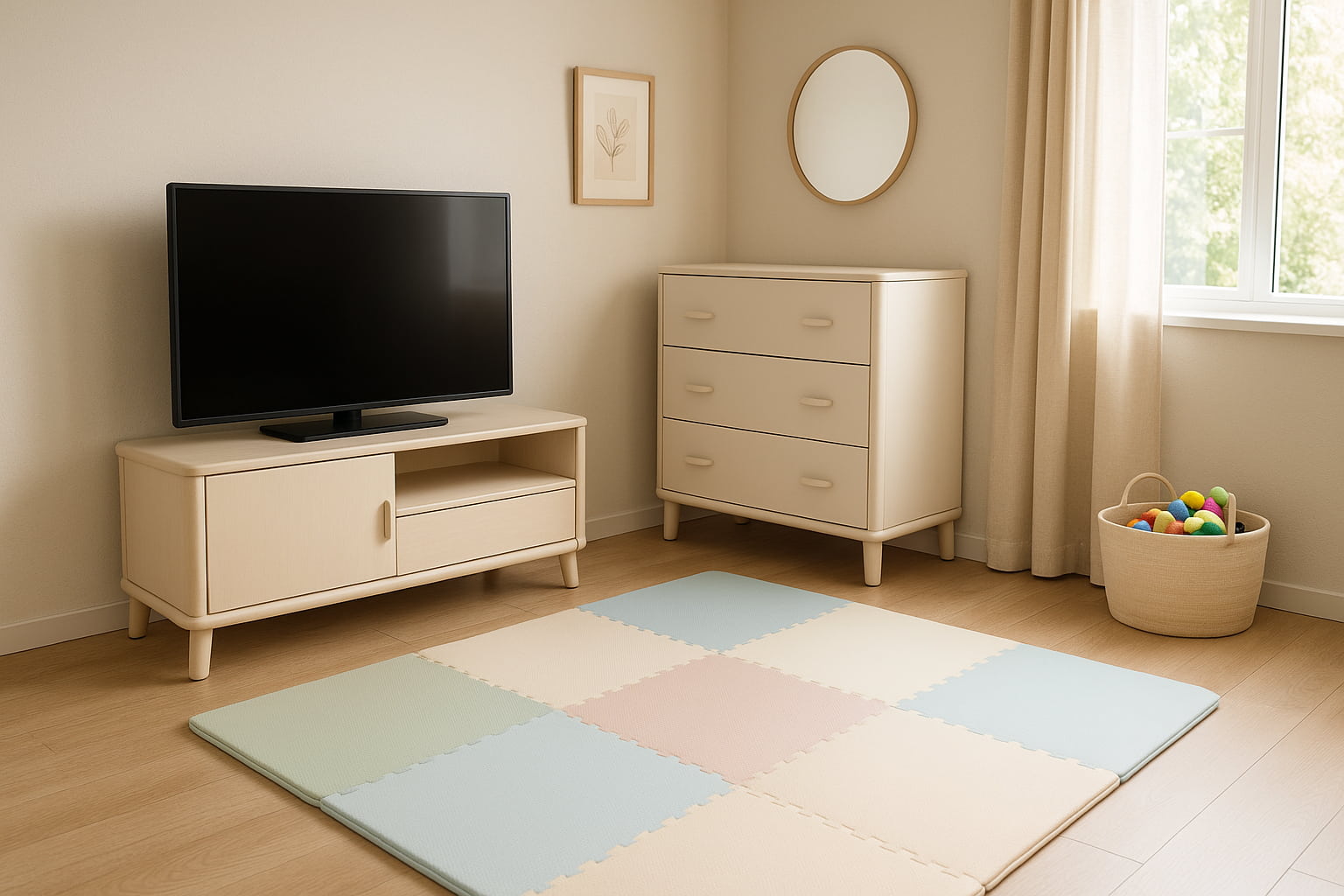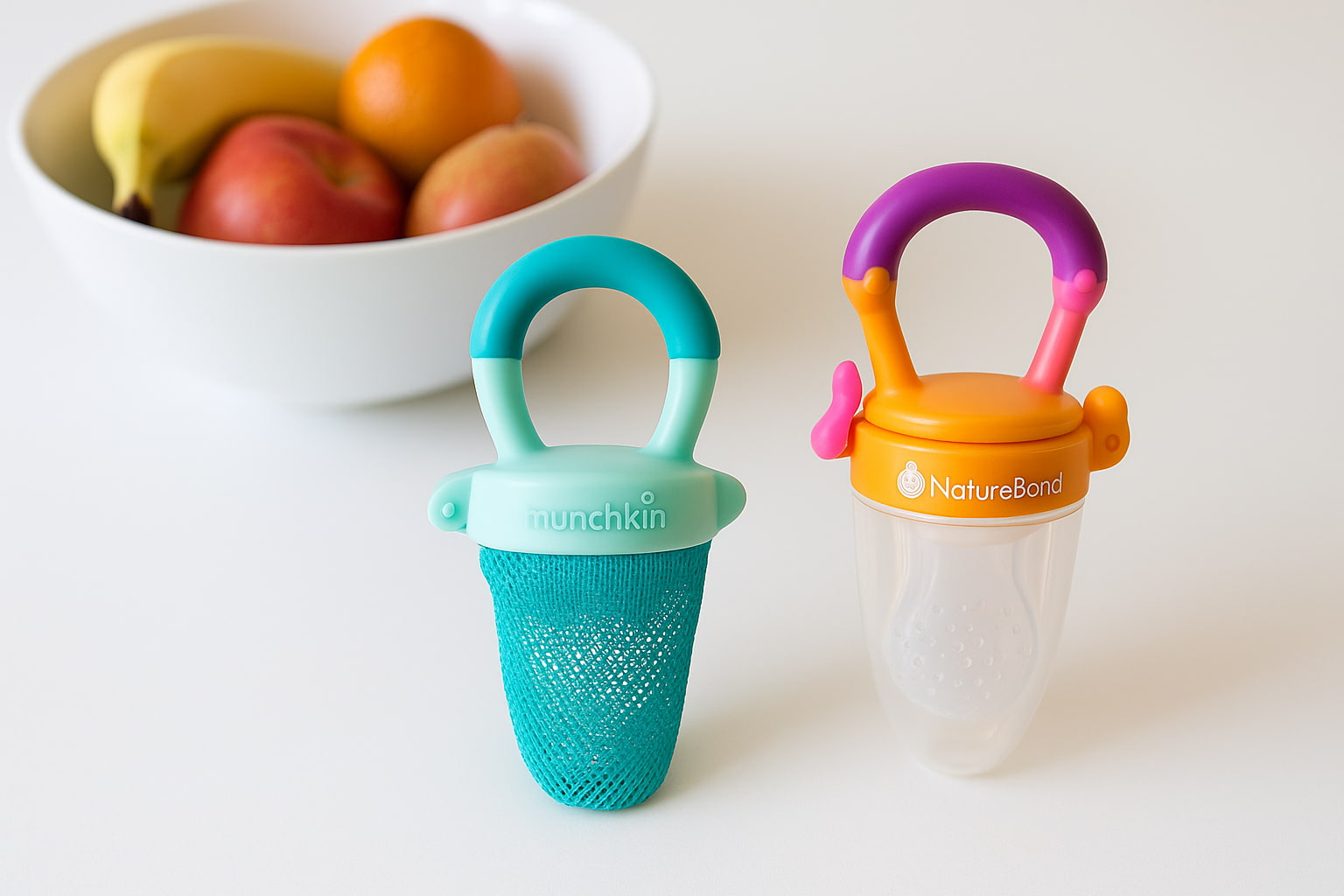Why Parents Debate Wearable vs Non-Wearable Baby Monitors
Every parent wants the same thing: peace of mind while their baby sleeps. From the first night home, the question of safety looms large. Is my baby breathing okay? Will I hear them if they need me? These worries are what make baby monitors so essential in modern parenting
But not all monitors work the same way. Some parents choose wearable vs non-wearable baby monitors, and the debate often sparks confusion. Wearables promise live tracking of heart rate and oxygen. Non-wearables, on the other hand, quietly watch movement or sound without touching the baby. Each option has clear benefits, but also trade-offs that parents need to weigh.
The real challenge lies in figuring out which one fits your lifestyle. Do you value detailed health data or a simple, no-contact system? This guide breaks down the differences, highlights pain points, and helps you make the choice with confidence.
👶 How Baby Monitors Work: Wearable vs Non-Wearable Basics Explained
Baby monitors may look simple, but the way they track your little one is very different. Wearables are small devices, often socks or bands, that go on the baby’s body. They track oxygen, heart rate, and sometimes movement. Non-wearables, by contrast, use under-mattress sensors or cameras to detect motion, sound, or breathing patterns without touching the baby.
🔹 Wearable monitors track vitals like pulse and oxygen in real time
🔹 Non-wearable monitors sense movement or sound without direct contact
🔹 Wearables require setup on the baby, while non-wearables stay in the crib or nursery
🔹 Both aim to reduce parent worry, but with different approaches
Each type has pros and cons. The choice depends on how much detail you want versus how hands-off you’d like the system to be.
👀 New to baby gear? See our guide on Best Baby Movement Monitors Compared.
💓 Health Tracking & Breathing Monitoring – Do You Really Need It?
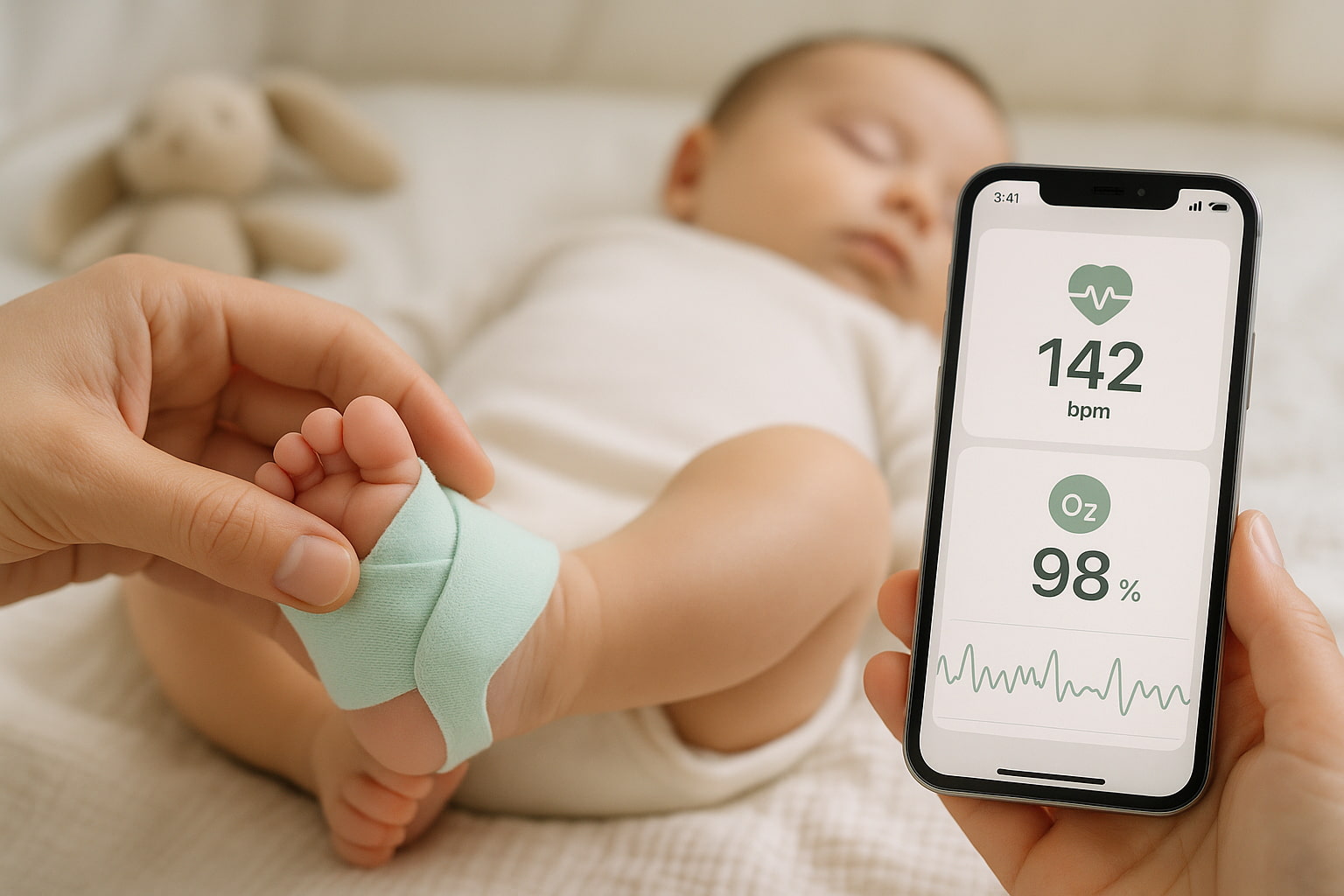
One of the biggest questions for parents is whether health tracking is necessary or just extra. Wearable baby monitors shine here. They measure oxygen, pulse, and even sleep quality. Non-wearables, on the other hand, focus on movement and breathing patterns through sensors or cameras, without touching the baby. Both aim to give peace of mind, but in different ways.
✅ Wearables track real-time oxygen and heart rate
✅ Non-wearables detect chest movement or stillness
✅ Wearables can alert parents faster about sudden health changes
✅ Non-wearables are easier to use but give less detail
The right choice depends on your comfort level. If you want in-depth vitals, wearables deliver. If simple motion monitoring feels enough, non-wearables work well.
🌙 Wondering if advanced features are worth it? See our Audio vs Video Baby Monitors Guide.
💤 Comfort & Sleep Impact: Will Monitors Disturb Baby’s Rest?
Comfort plays a big role in choosing between wearable and non-wearable baby monitors. Wearables like socks or bands stay on the baby’s foot or body. Some babies don’t mind them, but others may kick them off or fuss. Non-wearables, such as sensor pads under the mattress or cameras in the room, never touch the baby and feel less intrusive.
🔹 Wearables may cause slight discomfort if too tight or warm
🔹 Non-wearables keep sleep natural, as nothing is attached
🔹 Some babies sleep better without physical monitors on their bodies
🔹 Camera and pad options work quietly without disturbing rest
Parents need to balance peace of mind with baby comfort. If your child is sensitive, non-wearable monitors may protect sleep quality better.
📡 Connectivity & Reliability: Staying Linked to Your Baby
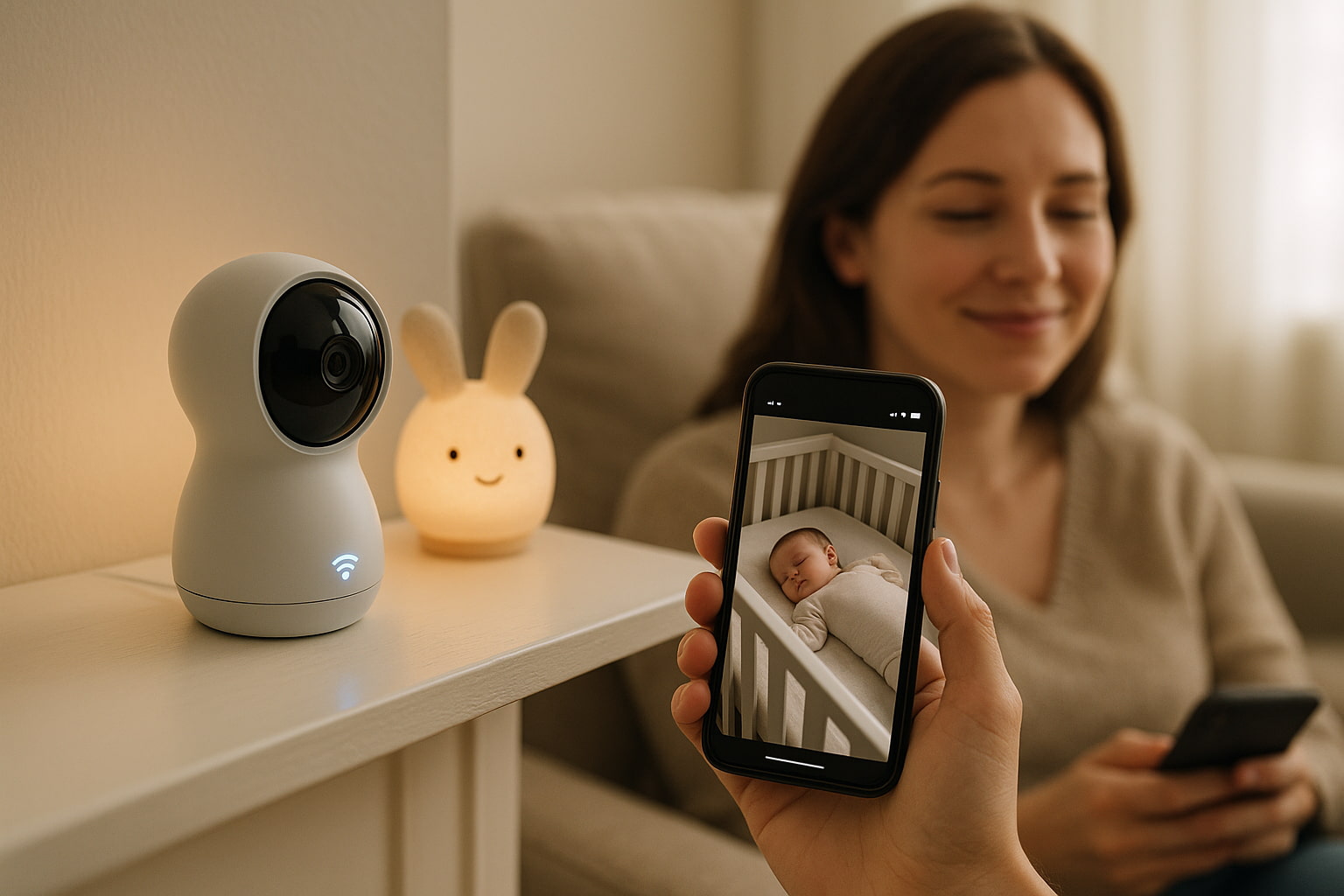
Staying connected matters most when monitoring your little one. Wearable monitors often depend on apps and Wi-Fi. They send data to your phone, which is great for tracking but can fail if the signal drops. Non-wearable monitors, like RF (radio frequency) units or closed-loop systems, usually provide more stable links inside the home.
✔ Wearables need strong Wi-Fi or Bluetooth to stay reliable
✔ Non-wearables with direct RF links are less likely to drop signals
✔ App notifications may lag if your internet is unstable
✔ Closed-loop systems keep monitoring even without the internet
Parents should weigh tech features against reliability. A lost connection during the night can cause extra stress.
👉 Worried about how safe Wi-Fi really is? Our full guide on EMF Radiation in Baby Monitors breaks down the risks, myths, and what parents can actually do to keep things safe.
🛠️ Ease of Setup & Daily Use
Parents want monitors that are simple to set up and stress-free to use every day. Wearable monitors usually come as socks or bands that need charging, pairing with an app, and regular cleaning. Non-wearable options often work by placing a sensor under the mattress or setting up a camera, which can be quicker to install.
🔸 Wearables require daily charging and re-fitting on your baby
🔸 Non-wearables are “set it and forget it” after installation
🔸 App-based wearables may take time to sync with your phone
🔸 Non-wearables usually rely on direct monitors, with less setup each day
For busy parents, the choice depends on whether you prefer detailed tracking or minimal maintenance.
🛍️ Featured Wearable Baby Monitors (Smart Sock & Band Options)
1. 🧦 Owlet Dream Sock® – FDA-Cleared Tracking Parents Trust
The Owlet Dream Sock tracks live pulse rate, oxygen, and sleep trends. This wearable sock connects to an app, giving parents peace of mind with detailed wellness updates and instant alerts.
🍼 Why Parents Love It
✅ FDA-cleared for infant monitoring
✅ Tracks oxygen, pulse, and movement
✅ Sends real-time alerts to your phone
✅ Soft and comfortable for the baby’s foot
💡 Thinking About It?
Best for parents who want medical-grade reassurance and constant vitals monitoring.
2. 🧦 Babytone Baby Oxygen Monitor – App-Connected Sleep Support
The Babytone Oxygen Monitor is a wearable sock that tracks oxygen, pulse, and movement. It connects via Bluetooth to an app, letting parents view real-time health updates with ease.
🍼 Why Parents Love It
✅ Tracks oxygen and pulse during sleep
✅ Syncs with Bluetooth app for updates
✅ Designed for babies 0–36 months
✅ Soft, lightweight, and baby-safe
💡 Thinking About It?
Ideal for parents who want a simple, app-friendly wearable for daily reassurance.
3. 🧦 Babytone Baby Sleep Monitor with Base Station – Extra Reassurance
This Babytone Sleep Monitor combines a smart sock with a base station for alerts. It tracks heart rate, oxygen, and movement, giving parents both app and bedside notifications.
🍼 Why Parents Love It
✅ Base station provides visual/audio alerts
✅ Tracks heart rate, oxygen, and sleep activity
✅ App access for real-time updates
✅ Sock design fits infants 0–36 months
💡 Thinking About It?
Perfect for families who want both app data and bedside reassurance.
🛍️ Featured Non-Wearable Baby Monitors (Cameras & Sensor Pads)
1. 🎥 HelloBaby No WiFi Baby Monitor – Reliable & Simple Connection
The HelloBaby Monitor is a non-WiFi video and audio monitor with a 5-inch screen. It offers pan-tilt-zoom, long battery life, lullabies, and secure direct connection.
🍼 Why Parents Love It
✅ No Wi-Fi, no hacking risks
✅ 30-hour battery life
✅ Pan-tilt-zoom camera with night vision
✅ Two-way talk and lullabies included
💡 Thinking About It?
Great for parents who want reliability, privacy, and zero app setup.
2. 🎥 Nanit Pro Smart Baby Monitor – Smart Sleep Insights
The Nanit Pro offers 1080p video, sleep tracking, and motion alerts. It runs via a secure mobile app along with a breathing band for sensor-free monitoring.
🍼 Why Parents Love It
✅ Crystal-clear 1080p HD video
✅ Sleep and breathing motion tracking
✅ Two-way talk and sound alerts
✅ Night vision for 24/7 peace of mind
💡 Thinking About It?
Best for tech-savvy parents wanting advanced smart features with sleep data.
3. 🛏️ Babysense 7 Baby Sleep Monitor – Non-Wearable Safety Choice
The Babysense 7 is a non-contact, under-mattress sensor system. It is stress-free, easy to use, monitoring your baby’s respiration and activity without touching them.
🍼 Why Parents Love It
✅ Non-wearable, no contact with baby
✅ Dual-sensor system for accuracy
✅ Alerts parents if breathing stops
✅ Simple “set and forget” installation
💡 Thinking About It?
Perfect for parents wanting safe, non-invasive monitoring with no Wi-Fi required.
💰 Cost & Long-Term Value: Subscription vs One-Time
Parents often ask if wearable monitors are worth the ongoing cost. Many wearable options connect to apps and may require monthly cloud storage fees. Non-wearables, on the other hand, are usually a one-time purchase with no hidden costs.
🔹 Wearable monitors may include app or storage fees
🔹 Non-wearables usually work without extra payments
🔹 Long-term costs can add up with subscriptions
🔹 One-time systems may save money over the years
Thinking about value means looking at your budget and needs. If you like data history and app features, the extra cost may be worth it. If you just want reliable alerts, a one-time non-wearable may be better.
👀 Looking for budget picks? Don’t miss our Top 4 Trusted Baby Monitors.
🔒 Privacy & Safety Considerations Parents Can’t Ignore
For many parents, safety is more than watching the baby; it’s also about keeping devices secure. Wearable monitors often connect to Wi-Fi, making them open to risks if settings aren’t strong. Non-Wi-Fi systems rely on local signals, offering more privacy but fewer smart features.
🟢 Wi-Fi monitors need strong passwords and updates to stay secure
🟢 Local monitors reduce hacking risk but may lack app convenience
🟢 Parents with high privacy concerns often choose non-Wi-Fi
🟢 Those wanting smart features accept the added responsibility of online safety
Every family must balance safety with convenience. A secure setup matters as much as the device itself.
📌 Did You Know?
According to the EUFY, nearly 70% of parents using Wi-Fi baby monitors skip two-factor authentication, leaving their devices more open to outside risks.
🏆 Final Verdict – Wearable vs Non-Wearable Baby Monitors: Which Should You Choose?
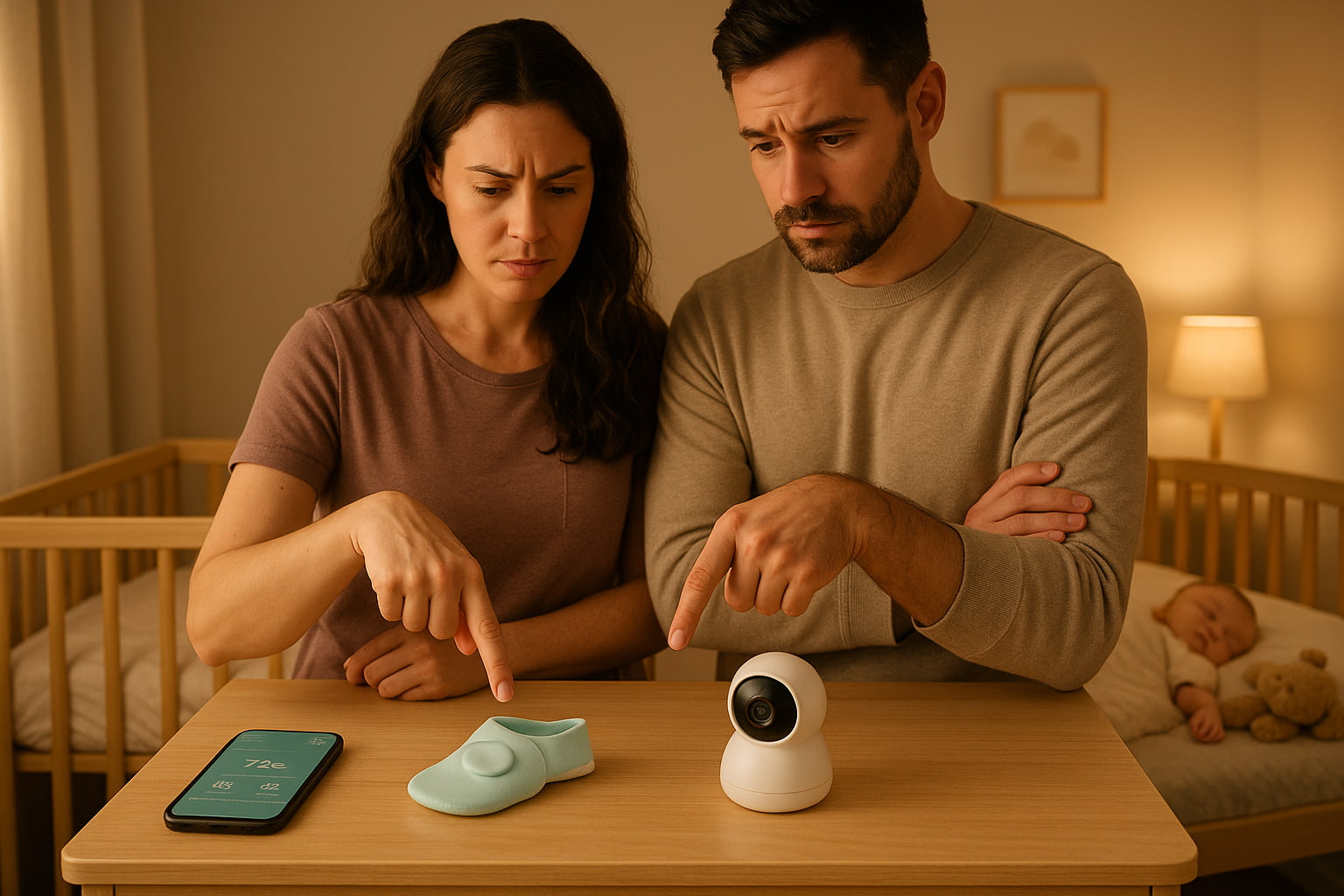
Choosing between wearable vs non-wearable baby monitors is not about which is “better,” but about what fits your family best.
Wearables give parents live health insights, like heart rate or oxygen tracking. They can be reassuring for preemies, newborns with medical needs, or parents who feel anxious at night. But they may feel less comfortable for some babies, and app reliance means you’ll need strong Wi-Fi.
Non-wearables offer simplicity. No straps, no socks, no charging. They provide reliable motion and sound alerts and often feel less intrusive. Parents who want easy setup and local monitoring usually lean this way.
In the end, it comes down to balance. Do you want advanced tracking for peace of mind, or a no-fuss monitor that just works? Both options serve different needs, and the right choice depends on your lifestyle, your child’s health, and how much tech you actually want in your nursery.
🧾 Quick Recap – Best Wearable & Non-Wearable Baby Monitors 2025
Parents want quick answers. Here’s a fast look at the standout features of each option:
1. Owlet Dream Sock® – Tracks heart rate and oxygen with FDA clearance.
2. Babytone Baby Oxygen Monitor – Wearable foot monitor with app insights.
3. Babytone Baby Sleep Monitor with Base Station – Combines sock tracking with a bedside station.
4. HelloBaby No WiFi Baby Monitor – Long battery life and no internet needed.
5. Nanit Pro Smart Baby Monitor – Smart video with breathing motion tracking.
6. Babysense 7 Movement Monitor – Under-mattress non-contact sensor for complete crib coverage.
Every one of these monitors is unique in its own sense. Choosing between them depends on whether you want in-depth health data or a simple, reliable check-in system
Disclaimer: This article contains affiliate links. If you buy through them, we may earn a small commission at no extra cost to you.
Written by the FindForBaby Team – helping parents make safer, smarter baby gear choices.

